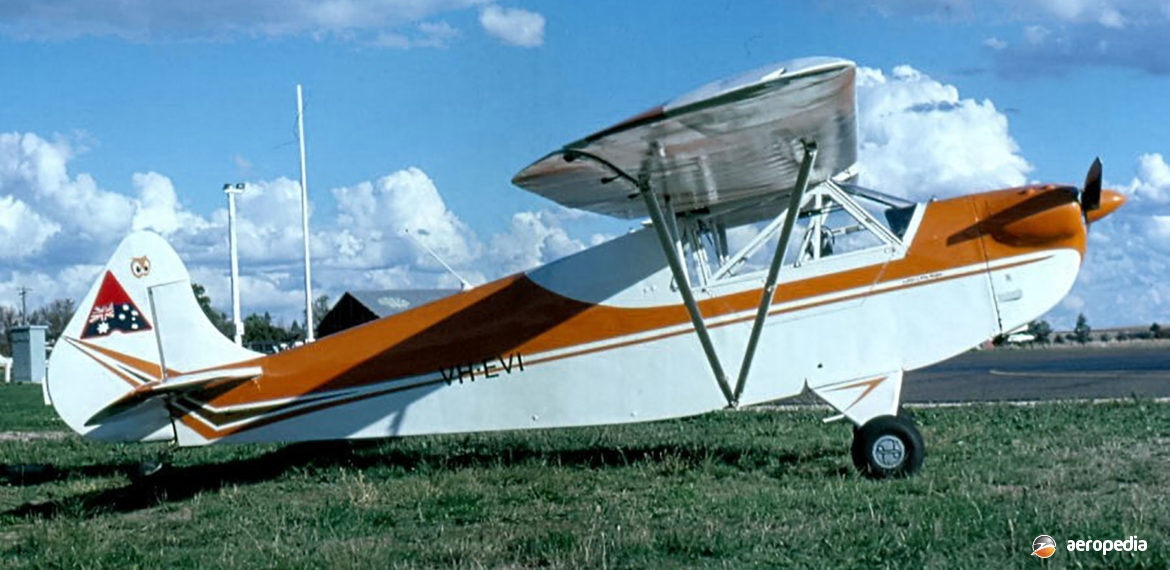Photograph:
Luton LA-5A Major VH-EVI (c/n N18) at Bathurst, NSW in April 1985 (David C Eyre)
Country of origin:
United Kingdom
Description:
Two-seat light cabin monoplane
Power Plant:
One 48 kw (65 hp) Continental A65 four-cylinder horizontally-opposed air-cooled engine
Specifications:
- Wingspan: 10.72 m (35 ft 2 in)
- Length: 7.24 m (23 ft 9 in)
- Wing area: 15.14 m² (163 sq ft)
- Max speed: 169 km/h (105 mph)
- Cruising speed: 153 km/h (95 mph)
- Stalling speed: 64 km/h (40 mph)
- Initial rate of climb: 213 m/min (700 ft/min)
- Range: 483 km (300 miles)
- Empty weight: 272 kg (600 lb)
- Loaded weight: 499 kg (1,100 lb)
History:
The Luton Major, a tandem two-seat cabin monoplane, was designed by the Luton Aircraft Company in 1939 as a successor to the Luton Minor. The Major was also intended to be constructed by amateurs. Designed as a low-cost amateur built aircraft, it could be fitted with a variety of engines varying in power from 41 kw to 63 kw (55 hp to 85 hp), including the Walter Mikron II and III, and the Continental A65 and C85.
In the 1960s Phoenix Aircraft in the United Kingdom marketed plans and components for the Major, and a number were built there, most being fitted with the A65 or C85 Continental engines. The prototype of the Major, designed by Mr Latimer-Needham (who also designed the Luton Minor), and constructed by Luton Aircraft, was flown for the first time on 12 March 1939. Like the Minor, the design was restressed to meet British airworthiness requirements by Phoenix Aircraft Ltd.
Construction was similar to the Minor. The wing chord was the same, and the wings folded back for ease of storage and transport. Dual controls were normally fitted. Entry was through a door on the starboard side, and a 50 litre (11 Imp gal) fuel tank was fitted behind the firewall. Only a couple have been completed in this region, the first being VH-EVI (c/n N18) first registered in 1976. This aircraft was noted at a number of aviation events on the Australian east coast over the years before it was retired and donated to the Australian Aviation Museum at Bankstown, being placed on display. The fate of this aircraft is not known following the demise of the museum in 2019.

